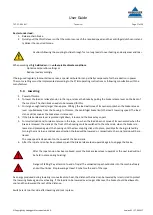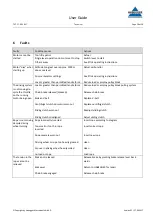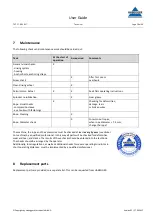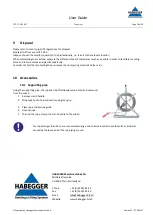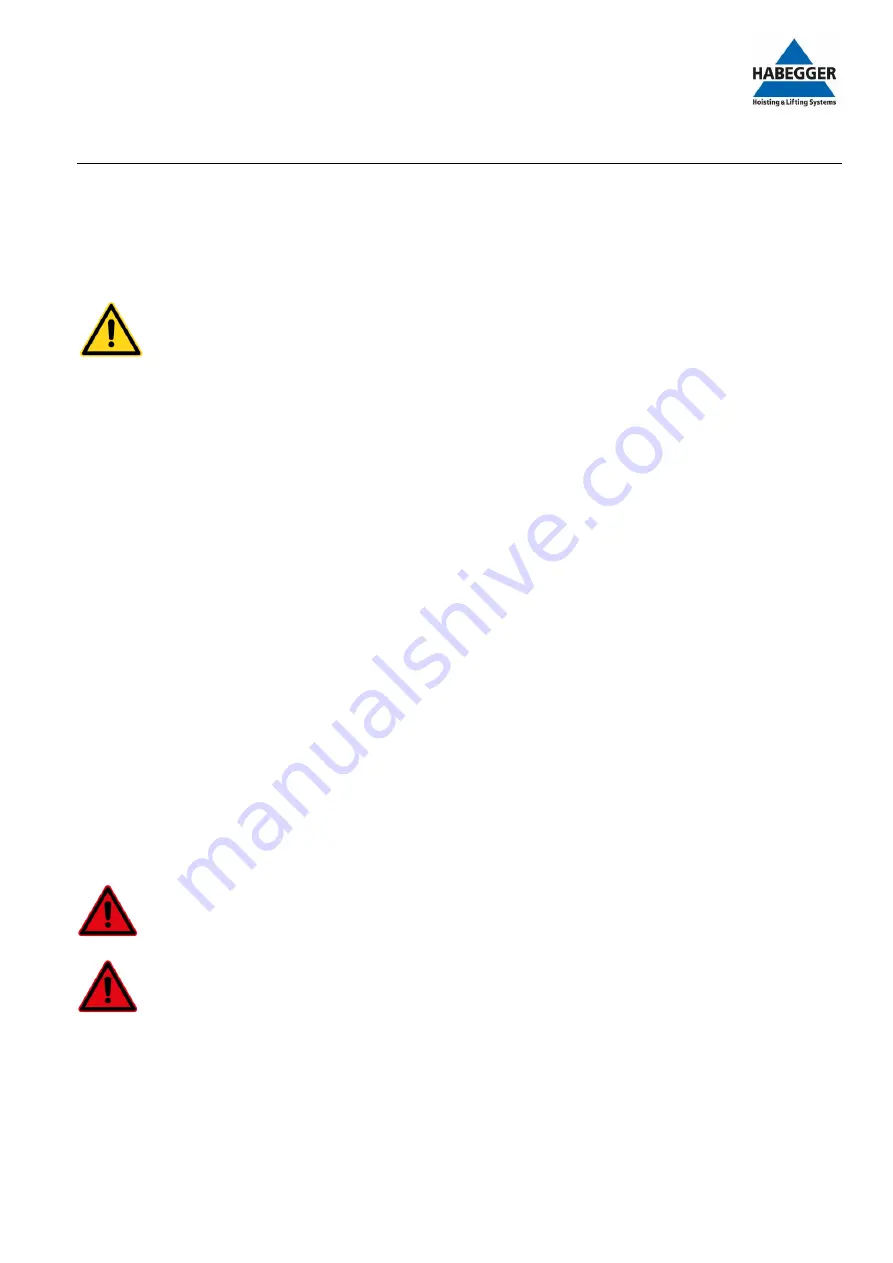
User Guide
TGT. 27.09.2017
Technical
Page 17 of 20
©Copyright by Habegger Maschinenfabrik AG
Version 02 / 27.09.2017
Restart under load:
1.
Release chain brake
2.
Quickly pull the throttle lever so that the motor can reach the required speed and the centrifugal clutch can instant-
ly deliver the required torque.
-
Caution! Allowing the coupling to slide through for too long leads to overheating and early wear and tear.
When working at high altitudes or in unfavourable climate conditions:
-
Optimise carburettor settings or
-
Reduce load accordingly.
If being used regularly in mountainous areas, a special carburettor can partially compensate for the reduction in power.
The motor settings must be implemented according to the STIHL operating instructions or following consultation with the
manufacturer.
5.4
Lowering
1.
Power off motor.
2.
To lower the load or relieve tension in the rope, release the brake by pulling the brake release lever on the back of
the machine. The chain brake needs to be released for this.
3.
For large enough loads (larger than approx. 100 kg), the load will move of its own accord when the brake release
lever is pulled away from the housing. In this case, the centrifugal brake limits the load’s lowering speed. The load
stands still as soon as the brake lever is released.
4.
If the brake release lever is pivoted right down, it locks and the brake stays open!
5.
For smaller loads and to release tension in the rope, i.e. when the load does not move of its own accord when the
brake is released, the crank at the front of the housing must be switched to the other side, when the brake is re-
leased, and pressed against the housing until the claw coupling clicks into place, possibly after being rotated. By
turning the crank in an anticlockwise direction the load will be lowered or, respectively, the rope tension will be re-
lieved.
The rope speed is dependent on the speed of the hand crank.
6.
After the rope tension has been relieved, pivot the brake release lever upwards again to engage the brake.
-
After the rope tension has been relieved, pivot the brake release lever upwards or the next load will not
be held in place during hoisting!
-
Danger of falling! Pay attention to end of rope! The unloaded rope should slide into the machine freely
and without kinks. Stop lowering at least 2 m before the end of the rope.
As energy produced during lowering is converted into heat, the distance the load can be lowered by is restricted to protect
the lowering brake against overheating. If the load is to be lowered over longer distances, the brake should be allowed to
cool and then lowered the rest of the distance.
Switch crank to other side after lowering and lock in place.















